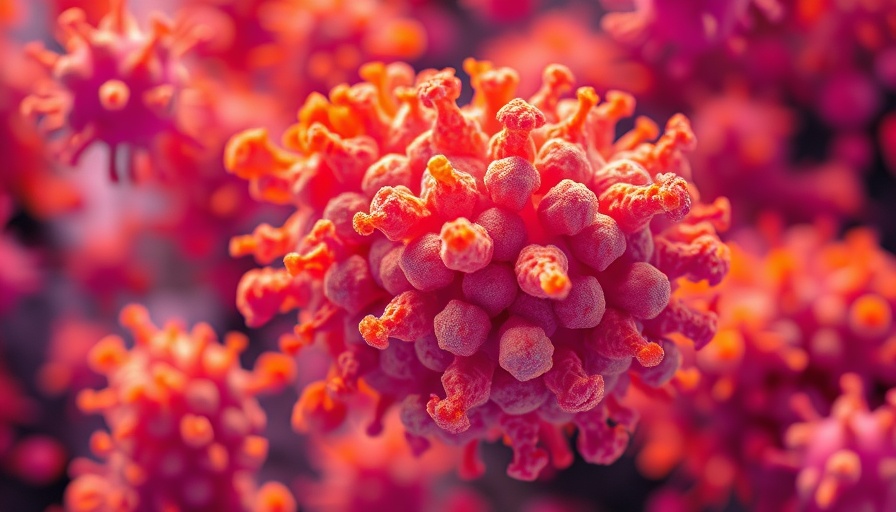
Understanding Blood Pressure and Its Risks
High blood pressure is often referred to as the "silent killer." It can lead to serious health issues, including heart disease, stroke, and kidney problems. Surprisingly, breathing techniques or mistakes can significantly impact our blood pressure. The video This Breathing Mistake Raises Your Blood Pressure 15 Points! highlights how simple habits can cause this spike and stresses the importance of correct breathing not just for tranquility but also for overall health improvement.
In This Breathing Mistake Raises Your Blood Pressure 15 Points!, the discussion dives into the surprising connection between breathing techniques and health, exploring critical insights that sparked deeper analysis on our end.
The Breath Connection to Blood Pressure
When we breathe incorrectly, especially through the mouth rather than the nose, it can lead to increased stress levels, anxiety, and even elevated heart rates. Proper breathwork is essential not only for relaxation but also for maintaining a healthy blood oxygen level, which translates to stable blood pressure. The video emphasizes a proper breathing technique: inhaling deeply through the nose and exhaling gradually through the mouth, allowing your body to adapt to stress effectively.Understanding blood pressure and its effect on your health is vital for everyone.
How Breathing Mistakes Affect Your Health
Mistakes in our everyday breathing can lead to more than just immediate discomfort. Long-term effects include persistent anxiety, various physical ailments, and increased blood pressure levels. When we focus on our breath and engage in techniques like diaphragmatic breathing, we not only lower stress but actively work to manage our blood pressure. Holistic methods, including yoga and mindfulness, can empower individuals to take charge of their health and discover natural remedies for persistent challenges.
Setting the Scene: A Personal Perspective on Breathing
All of us have experienced fleeting moments of anxiety or stress, and they can manifest physically. I recall a time when my own high-stress levels led to unusual blood pressure readings. What came as a revelation was the relationship between my breathing habits and overall wellness. By switching to mindful breathing practices, I was able to find not only calmness but noticeable improvements in my overall health. Taking charge of our breath can be liberating and restorative.
Real-World Implications of High Blood Pressure
It's important to note that the consequences of high blood pressure ripple into our daily life. Elevated levels can hinder our capacity to engage fully at work and in our personal endeavors. It can affect our sleep quality, contributing to anxiety and stress, creating a vicious cycle that impacts our mental health as well. This interplay shows just how interconnected our physical and mental health truly is.
Embracing Natural Remedies and Lifestyle Changes
To prevent the negative effects discussed, integrating natural methods is indispensable. Natural remedies such as herbal medicine, vitamins, and mindfulness practices play a crucial role. Techniques like meditation and intentional exercise help manage stress, while nutrients like magnesium and turmeric have shown benefits in blood pressure management. Transitioning toward a holistic lifestyle can lead to substantial improvements in health and overall quality of life.
Emerging Trends in Blood Pressure Management
The recent rise of holistic living and wellness trends emphasizes the need for a comprehensive approach towards health. These trends focus on long-term solutions rather than merely masking symptoms, allowing people to pursue balanced living. It’s fascinating to see how awareness around simple practices—such as proper breathing—can lead to major changes in how we view and manage our health.
Actionable Steps for Improvement
Motivating ourselves towards achieving better control over our blood pressure can often start with simple steps. Here are a few actionable strategies:
- Practice mindful breathing: Set aside a few minutes daily to focus entirely on your breathing.
- Engage in light physical activities: Exercise helps lower stress levels, which greatly impacts blood pressure.
- Explore dietary adjustments: Incorporate foods rich in nutrients like potassium, magnesium, and omega-3 fatty acids.
Staying informed and proactive empowers us to manage our health effectively.
Your Journey Towards Wellness
Embracing a new perspective towards health can seem daunting, yet every small step counts. By focusing on practices that improve our breathing patterns, we can make significant strides toward lowering our blood pressure and enhancing our overall wellness. Share your experiences, gather support from loved ones, and consider consulting with healthcare professionals who can guide you on your journey.
To discover more about how to manage your health better and incorporate holistic approaches, subscribe to our wellness blog for continued insights, motivation, and tips.
 Add Row
Add Row  Add
Add 




Write A Comment